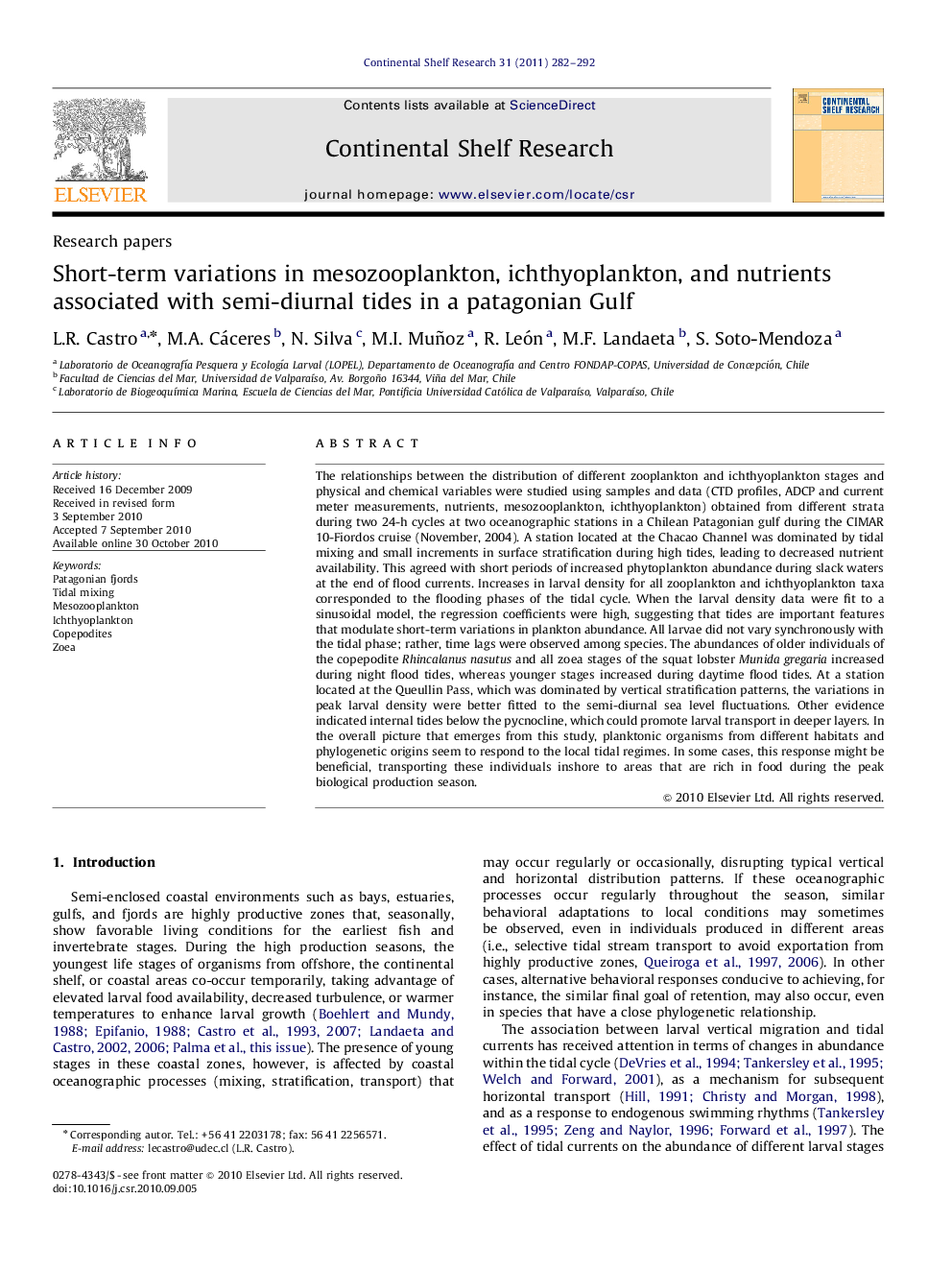| Article ID | Journal | Published Year | Pages | File Type |
|---|---|---|---|---|
| 4532706 | Continental Shelf Research | 2011 | 11 Pages |
The relationships between the distribution of different zooplankton and ichthyoplankton stages and physical and chemical variables were studied using samples and data (CTD profiles, ADCP and current meter measurements, nutrients, mesozooplankton, ichthyoplankton) obtained from different strata during two 24-h cycles at two oceanographic stations in a Chilean Patagonian gulf during the CIMAR 10-Fiordos cruise (November, 2004). A station located at the Chacao Channel was dominated by tidal mixing and small increments in surface stratification during high tides, leading to decreased nutrient availability. This agreed with short periods of increased phytoplankton abundance during slack waters at the end of flood currents. Increases in larval density for all zooplankton and ichthyoplankton taxa corresponded to the flooding phases of the tidal cycle. When the larval density data were fit to a sinusoidal model, the regression coefficients were high, suggesting that tides are important features that modulate short-term variations in plankton abundance. All larvae did not vary synchronously with the tidal phase; rather, time lags were observed among species. The abundances of older individuals of the copepodite Rhincalanus nasutus and all zoea stages of the squat lobster Munida gregaria increased during night flood tides, whereas younger stages increased during daytime flood tides. At a station located at the Queullin Pass, which was dominated by vertical stratification patterns, the variations in peak larval density were better fitted to the semi-diurnal sea level fluctuations. Other evidence indicated internal tides below the pycnocline, which could promote larval transport in deeper layers. In the overall picture that emerges from this study, planktonic organisms from different habitats and phylogenetic origins seem to respond to the local tidal regimes. In some cases, this response might be beneficial, transporting these individuals inshore to areas that are rich in food during the peak biological production season.
